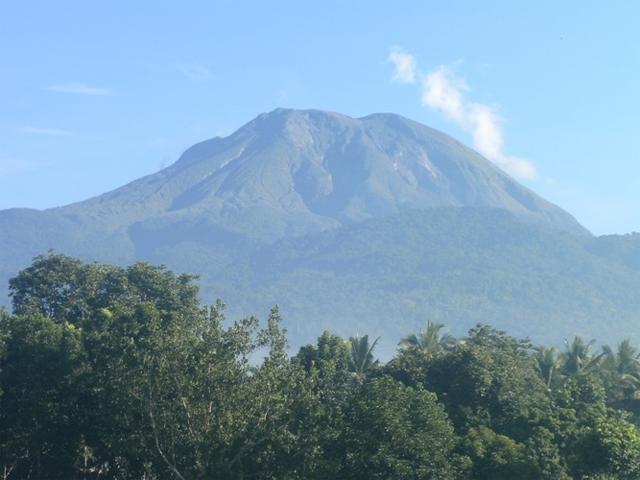Bulusan Volcano's alert status down from Level 1 to 0

The status of the Bulusan Volcano in Sorsogon has gone back to normalcy following a general decline in its monitoring parameters, the Philippine Institute of Volcanology and Seismology (PHIVOLCS) said Tuesday.
From Alert Level 1 (low-level of unrest), the status of Bulusan Volcano went down to Alert Level 0 (normal).
According to PHIVOLCS, one of the reasons for the lowering of the alert level of Bulusan Volcano was that the degassing activity from its active summit vents has remained in the "background levels" and has produced "only very weak to moderate" plumes since September 2023.
Likewise, the sulfur dioxide emission from its summit vents has been "low" at an average of 76 tons per day since Alert Level 1 was raised in October 2023.
PHIVOLCS said most monitored springs in the volcano have also recorded decreases in acidity, temperature, and diffuse carbon dioxide.
"These parameters indicate that input from the shallow hydrothermal system has remained within background levels and that there has been no input from deep magma sources," it explained.
The volcanic earthquakes recorded by the Bulusan Volcano Network (BVN) have also declined to "baseline levels," meaning 0 to 5 earthquakes per day, since the third week of August 2024.
"Events detected by the BVN since then have been weak, NNW-SSE trending volcano-tectonic or VT earthquakes that originated at close depths of less than 10 kilometers beneath the edifice," PHIVOLCS said.
"The decline and characteristics of VT earthquake activity indicate that rock-fracturing processes beneath the volcano may have been influenced by diminishing tectonic stresses related to the 18 August 2020 Mw6.6 earthquake along the nearby Masbate segment of the Philippine Fault Zone (PFZ)," it added.
PHIVOLCS also said that Bulusan Volcano's ground deformation may also be driven by recent tectonic movement along the Masbate segment of the PFZ.
With all these observations, PHIVOLCS said the monitoring parameters of Bulusan Volcano have returned to baseline or background levels and no magmatic eruption is expected in the near future.
However, it stressed that the alert status may be raised again to Alert Level 1 should there be a renewed increase in any one or combination of the monitoring parameters.
"The local government units and the public, however, are reminded that entry into the 4-kilometer radius Permanent Danger Zone (PDZ) particularly near the vents on the south-southeastern slopes, should be avoided due to the possibility of sudden and hazardous steam-driven or phreatic eruption, rockfall and landslide," PHIVOLCS said.
It also advised pilots to avoid flying close to the volcano's summit as ash from any sudden phreatic eruption can be hazardous to aircraft. People living within valleys and along river/stream channels should also be vigilant against sediment-laden stream flows and lahars in the event of heavy and prolonged rainfall. — VDV, GMA Integrated News




